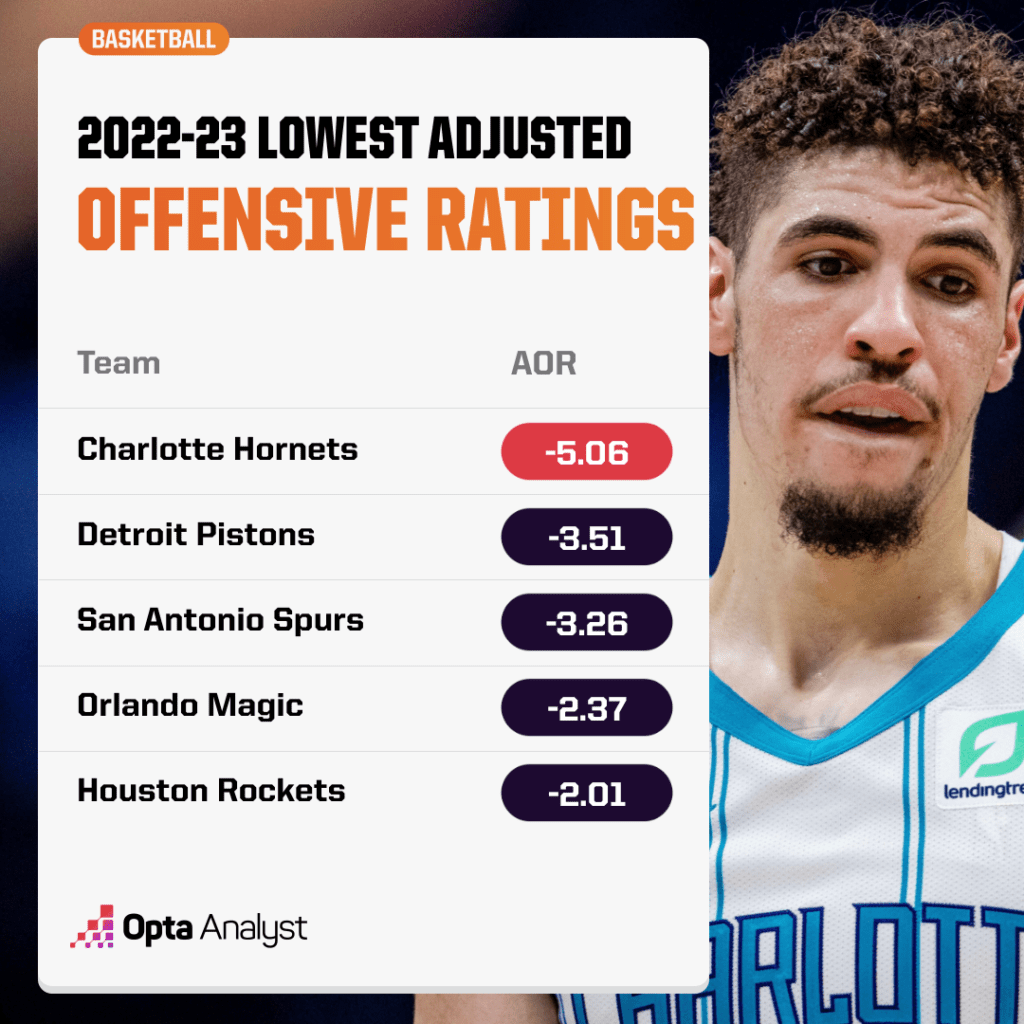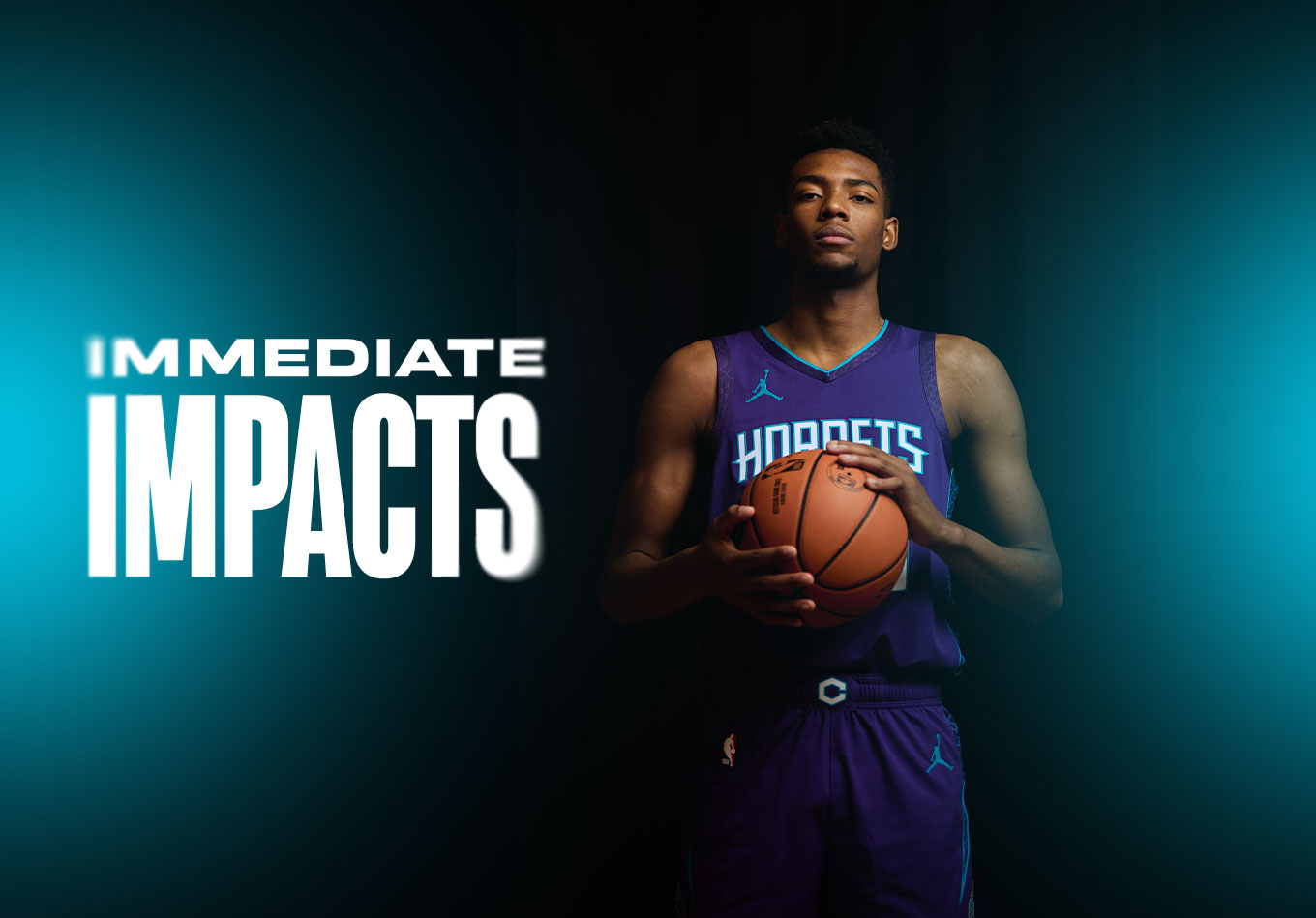Welcome to our offseason series “Immediate Impacts.” Most rookies don’t provide positive value to their teams right out of the gate. But as we saw last season with guys like Jalen Williams, Walker Kessler and Keegan Murray, some rookies can help their teams from Day 1. Over the next few months, we’ll break down ways that members of this incoming class can have that very impact.
The circumstances surrounding the 2023 NBA Draft’s second overall pick Brandon Miller are a bit murky. On paper, he’s a 6-foot-9 forward with the skills of a guard, which makes him a hot commodity.
But on that same paper, he’s also the face of harsh criticism for being selected over the highly coveted G League Ignite guard Scoot Henderson. And on top of that, the team that drafted him (the Charlotte Hornets) is a poster child for poor drafting and overall dysfunction.
This isn’t too dissimilar to the context around soon-to-be sophomore Keegan Murray entering last season. Murray, like Miller, was selected over a guard that many people believed had a higher upside than him (in that case, Jaden Ivey). And the team that drafted him was none other than the infamously incompetent Sacramento Kings.
However, Murray proved his naysayers wrong and became the only 2022 rookie to start in a playoff game last year – the exact type of impact we are seeking to highlight with this series. Now, the question becomes: Can Miller follow in Murray’s footsteps?
Murray was able to carve out a role for himself on the Kings last season by operating as a serviceable defender for his position and off-ball scorer. And while I have questions about Miller on the defensive side of the floor (at least early on), there is no doubt that he can get buckets playing off the basketball.
In the first installment of Immediate Impacts, we spotlighted the sharpshooting Jordan Hawkins. Last season, Hawkins shot 38.8% from 3 on 7.6 attempts per game. Miller, despite being tasked with a much larger offensive load, managed to shoot 38.4% on 7.5 attempts per contest.
We mention this to say that Miller can stroke it. He’s a proven marksman who will have no trouble profiting off of the open looks that his new teammate LaMelo Ball creates for him (much like Murray played off of De’Aaron Fox last season).
(Sidebar: Some impressive off-ball scoring numbers to note. According to AutoStats tracking technology, which has been used by the Orlando Magic in their draft analysis, Miller ranked in the 100th percentile in the nation in dribble handoff efficiency – when he was receiving the handoffs – and 95th percentile in cutting efficiency.
If I were head coach Steve Clifford, a simple two-man action the Hornets could run to get Ball and Miller involved would be a ghost screen.
Here is a quick clip of how it works:
For those of you who prefer to read about basketball concepts rather than watch clips about them, here is the gist of it. A ghost action involves the screener (in this case, Miller) coming up to set a screen but not actually setting it. Instead, he fakes the screen (ghosts it) and pops out to the 3-point line.
When this happens, the defense has to decide if it is going to hedge and recover, or switch. Depending on the matchups, if the defenders switch, they may be conceding a mismatch. But if they hedge and recover, the margin for error in execution decreases big time because if Miller’s man recovers back to Miller too soon (like in the clip above), it’s an easy layup for his teammate (next season, that player will be Ball).
Meanwhile, if the defender waits too long to recover, they run the risk of leaving Miller open for 3, which is not a good idea based on his shooting pedigree.
Do you see how many problems a simple action involving Miller and Ball can create for the defense?
And while Murray (probably) came into the league a better defender than Miller, the Alabama forward has him beat as it pertains to on-ball scoring. Last season, 70.9% of Murray’s 2s and 97.6% of his 3s were assisted. I’m not a betting man, but if I was, I’d wager that those totals are lower for Miller during his rookie campaign.
In his lone season at Alabama, Miller displayed some impressive footwork and dribble moves when he was able to create for himself in space (handling the ball in traffic was a completely different adventure). He ranked in the 93rd percentile in the nation in isolation frequency and 92nd percentile in drive frequency, per AutoStats data.
As a rookie, his on-ball load won’t be that massive (especially playing next to the notably ball-dominant Ball), but he’ll surely warrant a handful of these types of shots per game.
The Kings were able to propel themselves to the No. 1-ranked offense (first in our adjusted offensive rating) by turning up the dial on their offensive pace.
Playing fast seems like it will also have to be the Hornets’ blueprint for reinvigorating their offense (they were 30th in adjusted offensive rating), especially considering Ball’s transition prowess and the aerial artists (like Mark Williams and Miles Bridges) that flank him.

Miller will surely be able to help punctuate some of Ball’s transition forays, but don’t underestimate his potential contributions as an initiator. Lost in the sauce of his expansive scoring arsenal was Miller’s growth as a passer last year. Throughout the season, he became more comfortable trying different passes and finding new ways to create for his teammates.
Miller looked especially comfortable as a playmaker when he was out on the open floor in transition. That’s because he didn’t have to simultaneously worry about navigating tight corridors with the ball in his hands (a tradeoff to his length is it’s easier for opponents to swipe at the ball). In transition, Miller can focus strictly on surveying the floor and dime-ing up his comrades.
There’s no question that, down the road, Miller has the chance to become a fantastic two-way player. In fact, our NBA Draft Model has Jayson Tatum listed as his No. 1 comparison at the time both were coming out of college. That means he has a strong All-NBA caliber ceiling.
But this series isn’t focused on the future. We’re concerned with the present. And right now, Miller appears well-equipped to help the Hornets escape the doldrums of offensive purgatory, both with his dynamic on-ball/off-ball scoring and his burgeoning playmaking (particularly in transition).
He’s in a similar spot that Murray was in just a year ago – trying to prove his merit on a downtrodden team eager to make their return to the playoffs. And if, like Murray, Miller makes an immediate impact on winning, he immediately makes a powerful statement to all those who claimed the Hornets should have never drafted him with the second overall pick.
If you enjoyed this article, be sure to check out the first installment of “Immediate Impacts” on Jordan Hawkins, our second one on Brandin Podziemski, and our third one on Dereck Lively II.
